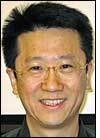May 05, 2008EPCglobal's Gen 2 standard for ultrahigh-frequency systems, approved by the International Organization for Standardization (ISO), was designed to optimize performance in different regulatory environments around the world. One important feature of the standard is dense-reader mode, which makes it easier for multiple RFID interrogators in close proximity—such as in warehouses or distribution centers—to operate simultaneously. This is critical for companies in Asia, Europe and other regions where only a small band of the UHF spectrum has been allotted for RFID systems.
Dense-reader mode divides the ultrahigh-frequency (UHF) frequency band into channels—some for interrogators, which transmit a strong RF signal, and others for tags, which reflect back a weaker RF signal. This way, a strong interrogator transmission collides only with other interrogator transmissions, and a weak tag backscatter collides only with other backscatters.
Currently, rules are in place to avoid harmful interference between UHF RFID and other wireless systems, including the listen-before-talk (LBT) protocol, which means RFID interrogators have to listen for other transmitters using the same channel before trying to communicate with tags. The protocol is effective, but it limits the time an interrogator can actually operate. Europe and Japan are now preparing a radio regulation change to eliminate the LBT requirement, which will significantly benefit dense-reader mode RFID systems.
But eliminating one problem could give rise to another. What will happen if a group of dense-reader mode interrogators without LBT and other short-range wireless systems operate in the same frequency band simultaneously? Buildings are adopting short-range wireless systems to control lighting, power and processes automatically, and for energy savings and efficient production.
The Auto-ID Lab Japan at Keio University, which is participating in the Japan radio regulation development for UHF RFID systems, has been researching this important issue. We've found that the backscatter from short-range wireless systems will overwhelm the weaker tag backscatter and slow the reading performance.
But our research also suggests that there are several ways to boost the performance of dense-reader mode RFID systems when other wireless systems are operating in the same environment. Check your background radio noise and protect your backscatter before operating in dense-reader mode. If a significant background radio signal is found in the backscattering channel, try another transmission channel for the dense-reader mode system. It's also possible to mitigate the performance degradation by using microwave absorbers or electromagnetic shielding.
Establishing an industrial guideline, rather than a regulation, on channel use is beneficial for the sake of frequency efficiency and operational flexibility. By taking these steps, companies should be able to benefit from using dense-reader mode RFID systems.
Jin Mitsugi is an associate director of the Auto-ID Lab Japan at Keio University and an associate professor in the Graduate School of Media and Governance.


